Pakistan, officially the Islamic Republic of Pakistan, is a South Asian nation and the world's fifth-most populous country with over 241.5 million residents. It boasts the second-largest Muslim population as of 2023. Islamabad is its capital, while Karachi serves as its largest city and financial hub. Pakistan ranks as the 33rd-largest country by area, bordered by the Arabian Sea, Gulf of Oman, and Sir Creek. It shares land borders with India, Afghanistan, Iran, and China, a maritime border with Oman, and is separated from Tajikistan by Afghanistan's Wakhan Corridor.
1906: Establishment of All-India Muslim League
In 1906, a Muslim intellectual movement led by Sir Syed Ahmed Khan, advocated for the two-nation theory and led to the establishment of the All-India Muslim League.
1919: End of Anglo-Afghan Wars
The Anglo–Afghan Wars ended in 1919.
March 1929: Jinnah's Fourteen Points
In March 1929, Muhammad Ali Jinnah issued his fourteen points, which included proposals to safeguard the interests of the Muslim minority in a united India.
December 1930: Iqbal Advocates Amalgamation
On December 29, 1930, Allama Iqbal advocated the amalgamation of Muslim-majority states in North-West India.
January 1933: Coined Name 'Pakistan'
In January 1933, Choudhry Rahmat Ali, a Pakistan Movement activist, first published the name 'Pakistan' (originally as "Pakstan") in a pamphlet Now or Never, using it as an acronym.
1937: British Governments Neglect the Muslim League
From 1937 to 1939, the perception that Congress-led British provincial governments neglected the Muslim League motivated Jinnah and other Muslim League leaders to embrace the two-nation theory.
1939: British Governments Neglect the Muslim League
From 1937 to 1939, the perception that Congress-led British provincial governments neglected the Muslim League motivated Jinnah and other Muslim League leaders to embrace the two-nation theory.
1940: Lahore Resolution
In 1940, the Lahore Resolution, also known as the Pakistan Resolution, was adopted.
1946: All-India Muslim League Victory
In 1946, election victories by the All-India Muslim League spurred the Pakistan Movement, which sought a homeland for the Muslims of British India.
1946: Muslim League Secures Seats
In 1946, the Muslim League secured 90 percent of the Muslim seats, which led the British to consider their stance on partition.
June 1947: Partition Declaration
In June 1947, the formal declaration to partition British India into two independent dominions—Pakistan and India—was issued by Mountbatten. At 7:00 P.M., All India Radio transmitted the public announcement. The founder of Pakistan Muhammad Ali Jinnah concluded his address with the slogan Pakistan Zindabad.
August 1947: Partition of India
In August 1947, the Partition of India sparked a major territorial dispute between India and Pakistan over Kashmir.
August 1947: Establishment of Pakistan
On 14 August 1947, the modern state of Pakistan was established, merging the Muslim-majority eastern and northwestern regions of British India.
1947: End of British Indian Empire
By 1947, all modern Pakistan was part of the British Indian Empire until independence.
1947: Muslim migration after partition
Even post-1947 partition, the Muslims from India kept migrating to Pakistan, especially Karachi and Sindh province.
1947: British Raj ends
From 1858 until 1947, the regions that compose the modern state of Pakistan were part of the British Raj.
1947: Pakistan Gains Independence
In 1947, Pakistan gained independence after the partition of the British Indian Empire, which awarded separate statehood to its Muslim-majority regions. This was accompanied by an unparalleled mass migration and loss of life.
1947: First war with India
In 1947, Pakistan was involved in its first conventional war with India over Kashmir, which concluded with a United Nations-mediated ceasefire, granting Pakistan control of one-third of the region.
1947: First Governor-General and Prime Minister
In 1947, after independence, Jinnah became Pakistan's first Governor-General and Liaquat Ali Khan became the nation's first Prime Minister.
1947: Establishment of the armed forces
In 1947, the armed forces of Pakistan were established and began to wield significant influence over national politics.
1947: Partition Riots and Migration
In 1947, the partition in Punjab Province was accompanied by riots, resulting in deaths and mass abductions. Around 6.5 million Muslims moved from India to West Pakistan and 4.7 million Hindus and Sikhs moved from West Pakistan to India. The Indo-Pakistani War was sparked later the same year.
1947: Establishment of ISI
The Inter-Services Intelligence (ISI), Pakistan's primary intelligence agency, was established within a year of Pakistan's independence in 1947.
June 1948: British to End Rule
As the Cabinet Mission failed, the British announced their intention to end rule by June 1948.
September 1948: Death of Jinnah
In September 1948, Jinnah, the President of the Muslim League, succumbed to tuberculosis.
1948: Indo-Pakistani War
A subsequent dispute over the princely state of Jammu and Kashmir eventually sparked the Indo-Pakistani War of 1947–1948.
March 1949: Objectives Resolution
In March 1949, the Objectives Resolution marked the initial step towards becoming an Islamic state, affirming God as the sole sovereign.
March 1949: Passage of the Objectives Resolution
In March 1949, the efforts of Jamaat-i-Islami and the ulama led to the passage of the Objectives Resolution, affirming that sovereignty belongs to God.
1949: Role of Maulana Shabbir Ahmad Usmani
In 1949, Maulana Shabbir Ahmad Usmani, a respected Deobandi alim (scholar) who held the position of Shaykh al-Islam in Pakistan, and Maulana Mawdudi of Jamaat-i-Islami played key roles in advocating for an Islamic constitution.
1949: Ceasefire and Line of Control
In 1949, the United Nations was involved in resolving the conflict, leading to a ceasefire and the establishment of the Line of Control (LoC) as a de facto border.
1951: Population size
In 1951, Pakistan's population was 33.7 million.
1956: Pakistan as Monarchy
From 1947 to 1956, Pakistan was a monarchy within the Commonwealth of Nations, and had two monarchs before it became a republic.
1956: First Constitution adopted
In 1956, Pakistan initially adopted a constitution.
1956: Pakistan Drafts Constitution
In 1956, Pakistan officially drafted its constitution and emerged as a declared Islamic republic.
1956: Included as a Preamble
The Objectives Resolution passed in March 1949, was later included as a preamble to the constitutions of 1956, 1962, and 1973.
1958: Constitution suspended by Ayub Khan
In 1958, Pakistan's constitution was suspended by Ayub Khan.
1962: Presidential System Adopted
In 1962, after adopting a presidential system, Pakistan witnessed significant growth until the second war with India in 1965.
1962: Second Constitution introduced
In 1962, the second constitution was introduced in Pakistan.
1962: Included as a Preamble
The Objectives Resolution passed in March 1949, was later included as a preamble to the constitutions of 1956, 1962, and 1973.
1965: Ban on Bollywood Films
From 1965, Bollywood films were banned from public cinemas in Pakistan.
1965: Second War with India
In 1965, Pakistan witnessed significant growth until the second war with India, resulting in an economic downturn.
1967: Economic Downturn
In 1967, the second war with India in 1965 resulted in an economic downturn and widespread public discontent.
1969: Devastating Cyclone
In 1969, President Yahya Khan consolidated control, but faced a devastating cyclone in East Pakistan resulting in 500,000 deaths.
1970: General Elections held
After the 1970 general elections, the Parliament crafted the 1973 Constitution.
1970: First Democratic Elections
In 1970, Pakistan conducted its first democratic elections since independence, intending to transition from military rule to democracy. However, after the East Pakistani Awami League emerged victorious over the Pakistan Peoples Party (PPP), Yahya Khan and the military refused to transfer power.
1971: Development of atomic weapons
Following the 1971 war with India, Pakistan hastily developed atomic weapons to deter foreign intervention.
1971: War over East Pakistan
In 1971, India and Pakistan engaged in another war over East Pakistan, with Indian forces aiding its independence, leading to the creation of Bangladesh.
1971: War with India
In 1971, in response to India's support for the insurgency in East Pakistan, preemptive strikes on India by Pakistan's air force, navy, and marines sparked a conventional war that resulted in an Indian victory and East Pakistan gaining independence as Bangladesh.
1971: KANUPP-I supplied by Canada
In 1971, the KANUPP-I, Pakistan's first commercial nuclear power plant, was supplied by Canada.
1971: East Pakistan Secedes
In 1971, the exclave of East Pakistan seceded as the new country of Bangladesh after a nine-month-long civil war.
1971: Influence of Marxist Thought
Post-1971, Marxist thought gained prominence in Pakistani philosophy through figures like Jalaludin Abdur Rahim.
1971: Military coup era
The military's influence in mainstream politics has been significant throughout Pakistan's history during the eras of 1958–1971.
1972: Nuclear Deterrence Plan
In 1972 Pakistan embarked on an ambitious plan to develop its nuclear deterrence capability with the goal of preventing any foreign invasion; the country's first nuclear power plant was inaugurated in that same year.
1972: Simla Agreement
India has stated that Kashmir is an "integral part" of India, referring to the 1972 Simla Agreement.
1973: 1973 Constitution
After the 1970 general elections, the Parliament crafted the 1973 Constitution. It declared Pakistan an Islamic Republic, with Islam as the state religion.
1973: Comprehensive constitution emerged
In 1973, a comprehensive constitution emerged.
1973: Included as a Preamble
The Objectives Resolution passed in March 1949, was later included as a preamble to the constitutions of 1956, 1962, and 1973.
1974: India's First Nuclear Test
In 1974, India's first nuclear test gave Pakistan additional justification to accelerate its nuclear program.
1974: Banning Ahmadis from calling themselves Muslims
Since 1974, Ahmadis face persecution and are banned from calling themselves Muslims.
1975: Cessation of Karachi Tramway Service
In 1975, Karachi's tramway service ceased operations, with plans underway to resurrect it in collaboration with Austrian experts.
1976: Establishment of Kahuta Research Laboratories (KRL)
In 1976, Abdul Qadeer Khan established the Kahuta Research Laboratories (KRL), serving as both its senior scientist and the Director-General.
1977: Military coup against the PPP
In 1977, democracy ended in Pakistan with a military coup against the leftist PPP.
1977: Constitution suspended by Zia-ul-Haq
In 1977, the 1973 constitution was suspended by Zia-ul-Haq.
1978: General Zia-ul-Haq became president
In 1978, General Zia-ul-Haq became the president of Pakistan.
1981: Urban population size
In 1981, Pakistan's urban population was 23.8 million.
1985: Constitution reinstated
In 1985, the 1973 constitution was reinstated.
1988: End of President Zia's era
From 1977 to 1988, President Zia's corporatisation and economic Islamisation initiatives led to Pakistan becoming one of the fastest-growing economies in South Asia.
1988: Benazir Bhutto elected Prime Minister
In 1988, Benazir Bhutto, daughter of Zulfikar Ali Bhutto, was elected as the country's first female Prime Minister.
1988: Military coup era
The military's influence in mainstream politics has been significant throughout Pakistan's history during the eras of 1977–1988.
1989: Kashmiri Muslim refugees
Since 1989, thousands of Kashmiri Muslim refugees fled to Pakistan, alleging rape and forced displacement by Indian soldiers.
1990: City dwellers
By 1990, city dwellers constituted 36% of Pakistan's population.
1990: First satellite launch
In 1990, Pakistan successfully launched its first satellite into space, becoming the first Muslim nation and second in South Asia to achieve this milestone.
1990: Decrease in rail track length
In 1990, the total rail track length in Pakistan was 8,775 kilometres (5,453 miles).
1992: Establishment of Jinnah Antarctic Research Station
Since 1992, Pakistan maintains its Jinnah Antarctic Research Station, making it the sole Muslim nation active in Antarctica research.
1993: Role in UN peacekeeping mission
In 1993, Pakistan played a major role in UN peacekeeping operations, such as the rescue mission in Mogadishu, Somalia.
1993: Deregulation of civil aviation industry
In 1993, Pakistan's civil aviation industry was deregulated, leading to a mix of public and private entities.
1995: Computer Literacy Initiatives
Since 1995, government initiatives, including computer literacy programs, have aimed to eradicate illiteracy.
1997: PML (N) secured a supermajority
As PML (N) secured a supermajority in elections in 1997, Nawaz Sharif authorised nuclear testings, as a retaliation to the second nuclear tests conducted by India in May 1998.
May 1998: Nuclear testing authorised
In May 1998, Nawaz Sharif authorised nuclear testings, as a retaliation to the second nuclear tests conducted by India.
1998: Average annual population growth rate
Between 1998 and 2017, the average annual population growth rate in Pakistan stood at +2.40%.
1998: Underground nuclear tests
In 1998, tensions with India led to Pakistan's underground nuclear tests, making it the seventh country to possess such weapons.
1998: Migration of Bengalis and Rohingya
Migration of Bengalis and Rohingya to Pakistan started in the 1980s and continued till 1998.
1999: Kargil War and Musharraf's coup
In 1999, military tension in the Kargil district led to the Kargil War, and General Pervez Musharraf took over through a bloodless coup d'état.
1999: Military coup era
The military's influence in mainstream politics has been significant throughout Pakistan's history during the eras of 1999–2008.
2000: Migration of Indo-European Aryans
Around 2000 BCE, following the decline of the Indus Valley civilisation, semi-nomadic Indo-European Aryans migrated into the Indian subcontinent.
2001: Musharraf as president
From 2001 to 2008, Musharraf governed Pakistan as president.
2001: Retirement of Abdul Qadeer Khan from KRL
In 2001, Abdul Qadeer Khan retired from his position as senior scientist and Director-General of the Kahuta Research Laboratories (KRL).
2001: Engagement in counterinsurgency operations
Since 2001, the Pakistan military has been engaged in counterinsurgency and internal security operations in the Khyber Pakhtunkhwa province, targeting Tehrik-e-Taliban Pakistan and associated militant groups.
2002: Musharraf as chief executive
From 1999 to 2002, Musharraf governed Pakistan as chief executive.
2004: Major non-NATO ally status granted by the U.S.
Although Pakistan was granted major non-NATO ally status by the U.S. in 2004, it faced accusations of supporting the Taliban insurgents in Afghanistan.
2005: Boost tourism
Following the 2005 Kashmir earthquake, The Guardian highlighted "The top five tourist sites in Pakistan" to boost tourism, featuring destinations like Taxila, Lahore, the Karakoram Highway, Karimabad, and Lake Saiful Muluk.
2005: Joint energy security plan
In 2005, Pakistan and China proposed a joint energy security plan, aiming for a generation capacity exceeding 160,000 MWe by 2030.
2005: International Seminar on Physics in Developing Countries
In 2005, Pakistan hosted an international seminar on "Physics in Developing Countries" for the International Year of Physics.
2005: Wheat production surpassed Africa's
In 2005, Pakistan's wheat production surpassed Africa's and nearly matched South America's.
2006: Globalization Index Ranking
In 2006, Pakistan ranked 56th on the A.T. Kearney/FP Globalization Index, reflecting increased globalization.
2006: Scientific productivity in articles
In 2006, Pakistan scientific productivity was approximately 2,000 articles per year.
November 2007: National Assembly completes term
On 15 November 2007, the National Assembly historically completed its first full five-year term.
2007: Increase in port infrastructure quality rating
In 2007, Pakistan's port infrastructure quality ratings rose from 3.7, according to the WEF's Global Competitiveness Report.
2007: English Medium Education Mandatory
In 2007, initiatives were introduced to make English medium education mandatory across the nation.
2007: Global export share
Pakistan's global export share accounted for just 0.13% in 2007 according to the World Trade Organization.
2007: Economy cooled
The economy cooled post-2007.
June 2008: Expansion of nuclear complex
In June 2008, the nuclear complex at Chashma in Punjab Province expanded with the installation of Chashma-III and Chashma–IV reactors, each with 325–340 MWe.
August 2008: Musharraf resigns
On 18 August 2008, President Musharraf resigned, and was succeeded by Asif Ali Zardari.
2008: City dwellers
By 2008, city dwellers constituted 36% of Pakistan's population.
2008: End of Musharraf's presidency
From 2001 to 2008, Musharraf governed Pakistan as president.
2008: Inflation peaked
In 2008, inflation peaked at 25.0%, necessitating IMF intervention to prevent bankruptcy.
2008: Religious Demographics
In 2008, the Bahá'í Faith in Pakistan had approximately 30,000 followers, while Sikhism, Buddhism, and Zoroastrianism each had around 20,000 adherents, accompanied by a small Jain community.
2008: Ban on Bollywood Films Lifted
In 2008, the ban on Bollywood films in public cinemas was lifted.
November 2009: Pakistan's Inaugural Fashion Week
Pakistan's first fashion week took place in November 2009.
2009: Remittances
From 2009-10 remittances sent to Pakistan from Overseas Pakistanis was US$8.9 billion.
2009: Gilgit-Baltistan receives semi-provincial status
In 2009, the constitutional assignment granted Gilgit-Baltistan semi-provincial status, providing it with self-government.
2010: Constitutional amendments
Constitutional amendments in 2010 curtailed presidential powers, enhancing the role of the prime minister.
2010: Fifth-largest Hindu population globally
In 2010, Pakistan had the fifth-largest Hindu population globally.
2011: Decrease in rail track length
In 2011, the total rail track length in Pakistan decreased to 7,791 kilometres (4,841 miles).
June 2012: Gilani's disqualification
In June 2012, clashes with the judicature prompted Gilani's disqualification from the Parliament and as the Prime Minister.
2012: Non-denominational Muslims
As of 2012, 12% of Pakistani Muslims self-identify as non-denominational Muslims.
2012: Attack on Malala Yousafzai
Following a 2012 attack by the Taliban, Malala Yousafzai became the youngest Nobel laureate for her advocacy for education.
2012: Atheist population
In 2012, 2% of Pakistan's population identified as atheist in a Gallup survey.
2012: Textile imports by China
In 2012, China imported US$1.527 billion worth of textiles from Pakistan.
February 2013: Lahore Metrobus Operational
In February 2013, the Lahore Metrobus became operational, marking the first of its kind in Pakistan.
May 2013: First successful democratic transition
In May 2013, the first successful democratic transition occurred in Pakistan.
2013: Number of airports and airfields
As of 2013, Pakistan had approximately 151 airports and airfields, including both military and civilian installations.
2013: Second nuclear complex
In 2013, Pakistan established a second nuclear complex in Karachi with plans for additional reactors, similar to Chashma.
2013: Cement exports
In 2013, Pakistan exported 7,708,557 metric tons of cement, with an installed capacity of 44,768,250 metric tons.
2013: Mandatory Chinese Language Courses in Sindh
In 2013, reforms mandated Chinese language courses in Sindh, reflecting China's growing influence.
2013: PML (N) victory, Nawaz Sharif elected PM
In 2013, the PML (N) achieved victory in the general election, following which Nawaz Sharif was elected as Prime Minister for the third time.
2013: Economic growth under IMF program
Since 2013, Pakistan's economy has seen growth under an IMF program.
2014: Contribution of services sector
As of 2014–15, the services sector contributes 58.8% to GDP, serving as the main driver of economic growth in Pakistan.
June 2015: Rawalpindi-Islamabad Metrobus Commences
In June 2015, the first phase of the Rawalpindi-Islamabad Metrobus, stretching 48.1 km, commenced operations, featuring e-ticketing and an Intelligent Transportation System.
2015: Pakistan's economy ranked 24th-largest
A 2015 report published by the World Bank ranked Pakistan's economy at 24th-largest in the world by purchasing power.
2015: Agriculture sector's contribution
As of 2015, agriculture contributed only 20.9% of the GDP.
2015: Remittances
From 2015-16 remittances sent to Pakistan from Overseas Pakistanis was US$19.9 billion.
2015: Literacy Rate Target
Government initiatives aimed for an ~86% literacy rate by 2015.
2015: Agreements with China
In 2015, Pakistan and China inked 51 agreements and Memorandums of Understanding (MoUs) for cooperative efforts.
2015: Scientific productivity in articles
In 2015, Pakistan scientific productivity was more than 9,000 articles per year.
2015: Travel & Tourism Competitiveness Report
In 2015, the World Economic Forum ranked Pakistan 125th out of 141 countries in its Travel & Tourism Competitiveness Report.
2015: Negative trade balance
Pakistan had a negative trade balance of US$23.96 billion in fiscal year 2015–16.
2015: Diaspora contribution
Pakistan's 7-million-strong diaspora contributed US$19.9 billion in 2015–16.
February 2016: Karachi's Green Line Metrobus Project Initiated
In February 2016, the Karachi's Green Line Metrobus project was initiated, which is part of a larger metrobus project financed by the Government of Pakistan.
October 2016: Renewable energy production
Pakistan produced 1,135 megawatts of renewable energy for the month of October 2016.
2016: Remittances from Saudi Arabia
As of 2016, Saudi Arabia is the largest source of remittances to Pakistan, contributing $5.9 billion.
2016: Pakistan mediates between Saudi Arabia and Iran
In 2016, Pakistan mediated between Saudi Arabia and Iran following the execution of Shia cleric Nimr al-Nimr, with visits to both countries by then Prime Minister Nawaz Sharif and the Chief of Army Staff, Raheel Sharif.
2016: Increase in port infrastructure quality rating
In 2016, Pakistan's port infrastructure quality ratings reached 4.1, according to the WEF's Global Competitiveness Report.
2016: Top nation for infrastructure development
Pakistan was lauded as the top nation for infrastructure development in South Asia during the 2016 annual meetings of the IMF and World Bank.
2016: Transformation to a middle-income country
Ruchir Sharma in his 2016 book anticipated a transformation to a middle-income country by 2020.
January 2017: Multan Metrobus Inaugurated
In January 2017, the Multan Metrobus was inaugurated, providing rapid transit services to Multan.
2017: Average annual population growth rate
Between 1998 and 2017, the average annual population growth rate in Pakistan stood at +2.40%.
2017: Urban population size
In 2017, Pakistan's urban population reached 75.7 million, with an urbanization rate of 36.4%.
2017: Census recording
The 2017 census recorded that 40.3% of the country's population was under the age of 15, while only 3.7% of Pakistanis were aged 65 or more.
2018: Literacy Rate in Pakistan
As of 2018, Pakistan's literacy rate was reported to be 62.3%, with notable regional and gender disparities.
2018: PTI victory, Imran Khan becomes PM
In 2018, PTI won the general election and Imran Khan became the 22nd Prime Minister.
2018: Foreign tourists
In 2018, Pakistan drew around 6.6 million foreign tourists.
2019: Pakistan 5th Largest Arms Importer
Between 2019 and 2023 Pakistan was the 5th largest importer of arms.
2019: Indefinite Ban on Bollywood Movies
In 2019, the screening of Bollywood movies in Pakistan faced an indefinite ban.
2019: Forest Landscape Integrity Index
Pakistan's Forest Landscape Integrity Index mean score was 7.42/10 in 2019, ranking 41st globally out of 172 countries.
2019: Shia population
The Shia population in Pakistan was estimated at 42 million in 2019.
May 2020: Internet Users
As of May 2020, Pakistan has around 82 million internet users.
August 2020: Peshawar Bus Rapid Transit Inaugurated
In August 2020, Peshawar's Bus Rapid Transit was inaugurated, making it the fourth BRT system in Pakistan.
November 2020: Karachi Circular Railway Partially Revived
In November 2020, the Karachi Circular Railway was partially revived, offering public transit services in the Karachi metropolitan area.
2020: Transformation to a middle-income country
Ruchir Sharma in his 2016 book anticipated a transformation to a middle-income country by 2020.
May 2021: Nuclear power plants
As of May 2021, Pakistan operates six licensed commercial nuclear power plants contributing approximately 5.8% to Pakistan's electricity supply.
December 2021: Karachi Green Line Metrobus Operational
In December 2021, Karachi's Green Line Metrobus became operational as part of a larger metrobus project financed by the Government of Pakistan.
2021: Forest cover in Pakistan
Approximately 4.8% or 36,845.6 square kilometres of Pakistan was forested in 2021.
2021: Establishment of National Intelligence Coordination Committee
In 2021, the National Intelligence Coordination Committee was established to improve coordination among Pakistan's intelligence agencies.
April 2022: Shehbaz Sharif elected as prime minister
In April 2022, Shehbaz Sharif was elected as prime minister, after Imran Khan lost a no-confidence vote.
2022: Cotton production
As of 2022, Pakistan ranks seventh globally in cotton production.
2022: Pakistan's nominal GDP
As of 2022, Pakistan's estimated nominal GDP is US$376.493 billion.
2022: Fertility rate
In 2022, Pakistan's fertility rate was estimated at 3.5.
October 2023: Deportation order for undocumented refugees
In October 2023, Pakistan ordered the deportation of thousands undocumented refugees, citing security concerns.
2023: Troop contributor to UN peacekeeping missions
According to a 2023 UN report, the Pakistani military was the fifth largest troop contributor to UN peacekeeping missions.
2023: National census
According to the 2023 national census, the largest ethnolinguistic groups include the Punjabis (36.98%), Pashtuns (18.15%), Sindhis (14.31%), Saraikis (12%), Urdu speaking people (9.25%), Balochs (3.38%), Hindkowans/Hazarewals (2.32%), and Brahuis (1.16%).
2023: Restrictions on media
According to the journalist Raza Rumi, in 2023, TV channels in Pakistan faced suspensions and legal threats for airing content critical of the government or military, while online platforms also experienced temporary takedowns.
2023: Pakistan 5th Largest Arms Importer
Between 2019 and 2023 Pakistan was the 5th largest importer of arms.
2023: Pakistan's Population and Muslim Majority
In 2023, Pakistan is the fifth-most populous country in the world with a population of over 241.5 million, and has the second-largest Muslim population.
2023: Pakistan's ranking in published scientific papers
In 2023, Pakistan ranked 26th globally in published scientific papers.
2023: Electricity generation capacity
In 2023, Pakistan's installed electricity generation capacity was ~45,885 MWt.
2023: Population size
In 2023, Pakistan's population reached 241.5 million.
2024: Pakistan's armed forces size
As of 2024, Pakistan's armed forces are the world's seventh-largest standing army, consisting of approximately 660,000 active-duty troops and 291,000 paramilitary personnel.
2024: Shehbaz Sharif was elected prime minister for a second term
During the 2024 general election, PTI-backed independents became the largest bloc, but Shehbaz Sharif was elected prime minister for a second term, as a result of a coalition between PML (N) and PPPP.
2024: Pakistan's ranking in the Global Innovation Index
In 2024, Pakistan was ranked 91st in the Global Innovation Index.
September 2025: Strategic Mutual Defence Agreement with Saudi Arabia
In September 2025, Pakistan and Saudi Arabia signed a Strategic Mutual Defence Agreement under which any aggression against one country is considered an aggression against both.
2025: Press Freedom Index ranking
In 2025, Pakistan ranked 158 out of 180 countries in the Press Freedom Index by Reporters Without Borders, highlighting restrictions on freedom of the press.
2025: Renewable energy
Pakistan expects to produce 10,000 megawatts of renewable energy by 2025.
2030: Joint energy security plan
In 2005, Pakistan and China proposed a joint energy security plan, aiming for a generation capacity exceeding 160,000 MWe by 2030. Pakistan's Nuclear Energy Vision 2050 targets a capacity of 40,000 MWe, with 8,900 MWe expected by 2030.
2050: Predicted economic growth
Goldman Sachs predicted Pakistan's economy could grow 15 times by 2050.
2050: Projected growth of middle class
Pakistan has an estimated 40 million middle class citizens, projected to increase to 100 million by 2050.
2050: Nuclear Energy Vision
Pakistan's Nuclear Energy Vision 2050 targets a capacity of 40,000 MWe, with 8,900 MWe expected by 2030.
Mentioned in this timeline
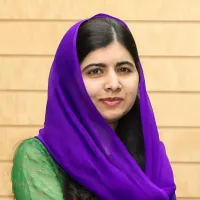
Malala Yousafzai is a Pakistani activist advocating for female education...
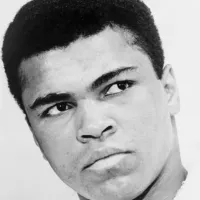
Muhammad Ali nicknamed The Greatest was an iconic American professional...
Saudi Arabia officially the Kingdom of Saudi Arabia KSA is...
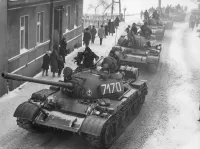
Martial law is the imposition of military rule in place...
India officially the Republic of India is located in South...
The Guardian is a British daily newspaper founded in as...
Trending
David Joseph Simon is an American professional basketball player. He played college basketball at Indiana University – Purdue University Fort Wayne.

The Davis Cup organized by the International Tennis Federation ITF is the premier international team event in men's tennis and...

6 months ago Edward Jones Expands Roster, Maintains Growth Target; Advisors Qualify for Recognition

Jon Gruden is a former American football coach and media personality He achieved significant success as the head coach of...
Lauralee Bell is an American actress recognized for her role as Christine Blair in the daytime soap operas The Young...
3 hours ago Oregon Ducks' Defense Favored in USC Game; Betting Line Movement and Predictions
Popular

XXXTentacion born Jahseh Dwayne Ricardo Onfroy was a controversial yet...
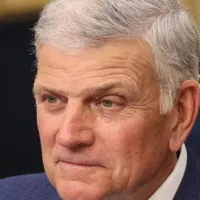
William Franklin Graham III commonly known as Franklin Graham is...

Cristiano Ronaldo often nicknamed CR is a Portuguese professional footballer...

Candace Owens is an American conservative political commentator and author...
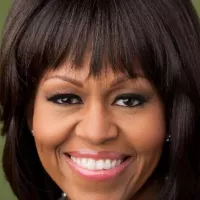
Michelle Obama is an American attorney author and former First...

Marjorie Taylor Greene known as MTG is a far-right American...